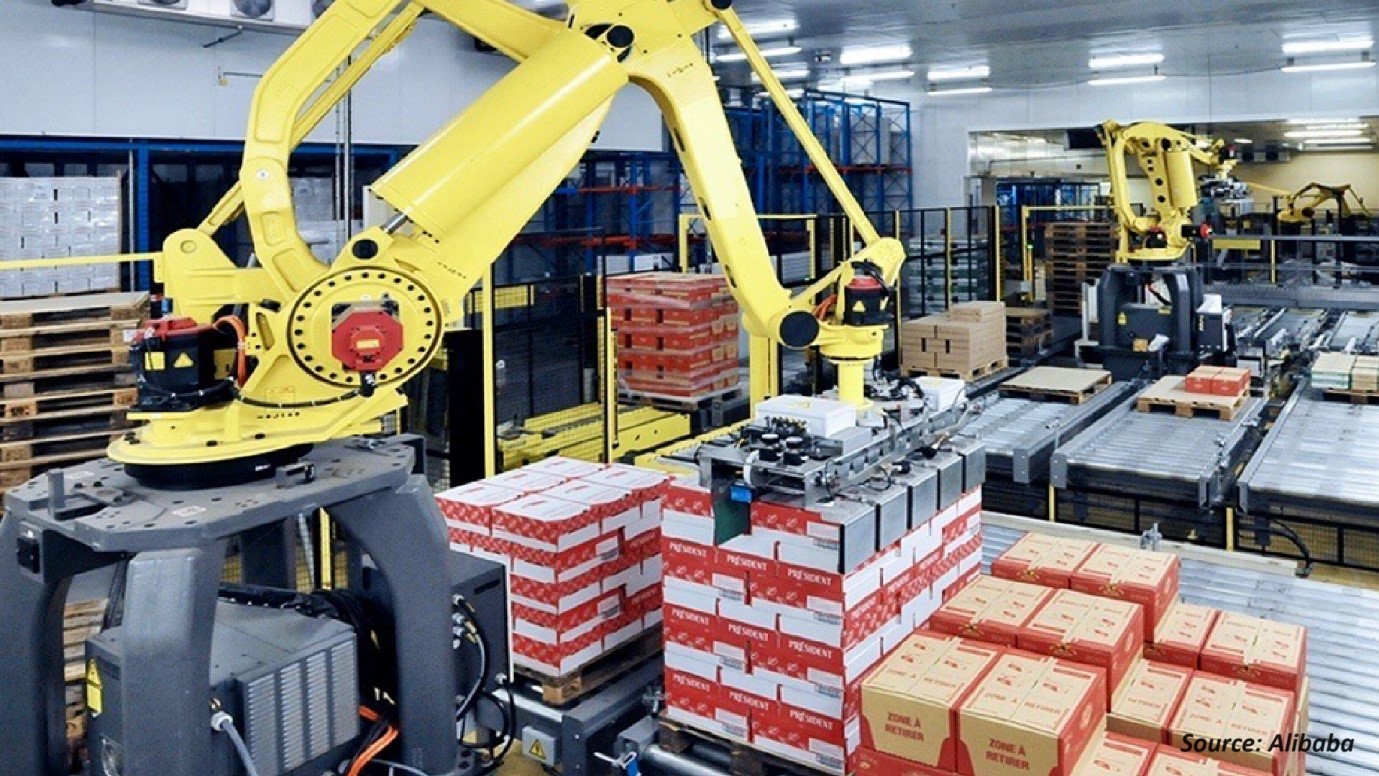Future of E-commerce Industry
16-Oct-2020

Introduction
Electronic commerce or E-commerce has changed the landscape of interaction between buyers and sellers. Increased usage of internet and smart-phones, improved mode of online payments and better demographic segmentation has given rise to a market which has grown to reach USD 3.5 trillion sales globally. The digital revolution has altered the way companies connect with their customers, providing unique opportunities to both big as well as small businesses. Retailers are expanding their commercial activities digitally not only to increase sales but also for the purpose of brand management.
There are no barriers in the virtual world and the vast potential of the internet is making it easier for businesses to target a larger segment of the population. In this ecosystem, there are many small plus big fishes, competing for a moderate share of customers’ wallet and attention. However, in the present time, Amazon is dominating the e-commerce ecosystem. This gigantic online retailer has built an impressive catalogue of more than 12 million products.
To be on the top of the game, businesses have to keep a track of the latest trends and be in tune with the demands of their consumers along with the ongoing technological advancements. The thriving market of e-commerce is expected to reach USD 5879.1 billion by 2022. This is not only a big number but also an indication about the bright future of e-commerce industry.

Benefits of E-commerce
Online businesses have several advantages. Compared to physical stores, online shops require lower start-up and upfront costs. In case of online drop shipping, you won’t even need to maintain stock inventory, further reducing the financial cost. Unlike the physical market, there are no odd timings to attract the right customer in the digital sphere. Selling worldwide has become feasible. Building your brand to broaden your market share globally is another advantage.
To enhance the online shopping experience, website personalization for different customers has become a preference. E-commerce platforms are also capitalising on buyer's impulse by using striking product images and ads that encourage impelling buying behaviour.
With e-commerce, one can obtain access to customer’s data for analysis which opens up different ways of communication for building positive customer relationship. Through e-commerce blogging, online sellers are attracting organic traffic and driving sales without heavy spending.

Trends in E-commerce Industry
As the e-commerce market is expanding exponentially, identification of the upcoming e-commerce trends has become a lot more important. This will enable the businesses, irrespective of their size, to timely overcome new challenges and adapt swiftly. Let us look at some of the trends that will shape the e-commerce industry:
-
Better Customer Experience
Positive customer experience is essential if you want to run your business successfully. It is your responsibility to guide your customers through your website and address all their queries and concerns. Businesses are deploying virtual customer assistants for better customer engagement. As per the reports published by Next Move Strategy Consulting, the Global Virtual Customer Assistants (VCA) Market size was estimated to be USD 3.69 billion in 2019 and is predicted to reach USD 73.51 billion by 2030 with a CAGR of 32.3% from 2020-2030.
-
Augmented Reality
Augmented Reality (AR) has enhanced the online shopping experience. Online shoppers can now check and compare products at an advanced level. Visualization of the product has become easier and the immersive experience is driving sales too. IKEA Place, Ikea's AR app, is assisting customers in their buying journey, and hence, enhancing its brand popularity. Chatbots are also evolving and supporting customers online 24x7. The Global Artificial Intelligence (AI) Bots Market size has been predicted to reach USD 177.41 billion by 2030 with a CAGR of 47.2% from 2020-2030, as per the Next Move Strategy Consulting's reports.
-
Personalization
E-commerce companies are using algorithms and collecting data related with the behaviour of the customers- browsing habits, buying history and other such related records. The collected information is then used to craft relevant e-commerce marketing campaigns. Personalization is set to become an e-commerce norm. It is raising customers' expectations and developing into an advanced marketing scheme. Customers now receive emails about product recommendations based on their recent purchases from almost every e-commerce website. Additionally, personalization in the e-commerce platforms, elevates customer experience and bring in customer loyalty.
-
Multiple Payment Options
Customers are always looking for better payment options. Ease of shopping on e-commerce websites includes hassle-free, secure and fast checkouts. E-commerce websites incorporate various payment options. Multiple payment options reduce cart abandonment as buying becomes easier for the customer. Several mobile applications and payment gateways are emerging as reliable payment modes, leading to overall customer satisfaction. As per the reports published by Next Move Strategy Consulting, the Global Mobile Payment Market size is predicted to garner USD 17,706.10 billion by 2030, with a growing CAGR of 25.8% from 2020-2030.
-
Voice Search Option
The popularity of Amazon's Alexa has made it clear that now internet browsing sessions are achievable even without a screen. Therefore, to stand out in the e-commerce market, businesses have to become 'voice-friendly'. Voice-based searches are widely being adopted by the consumers. However, this is not to suggest that voice search will diminish the SEO's importance. It will be more about content optimization. Owing to the increased use of voice-enabled search assistants, we now have a new term- Voice commerce. It represents those transactions that happened via any voice device. The Global Voice and Speech Recognition Software Market size is predicted to reach USD 57.45 billion by 2030 with a CAGR of 18.5% from 2020-2030.

Future Looks Bright
Evolving markets like India, Brazil, China, South Africa and Russia will play a huge part in the future of e-commerce. Though the market has become congested and complicated, it will continue to progress in the future. We will see many e-commerce trends that will bring innovation, relevant changes and leave an impact on the landscape of the industry. The ever-expanding digital world has created a space where out-dated ideas or devices get replaced immediately. Customer satisfaction will always be valued more, regardless of them being online or offline. Their purchasing power is strengthening and they are making more informed decisions. The future of the e-commerce market belongs to the customers and hence, businesses should customise their policies in alignment with their demands and expectations.
(Keywords- Electronic commerce, E-commerce, Benefits of E-commerce, Customer analysis, E-commerce blogging, Future trends in ecommerce, E-commerce market, Next Move Strategy Consulting, Customer experience, Virtual customer assistants, Augmented Reality, IKEA Place, E-commerce marketing, Cart abandonment, Voice search option, Amazon's Alexa)
Add Comment
Related Blogs
Leaders in Automation Kion, Honeywell, and ABB Influence on the Warehouse Market
Next Move Strategy Consulting forecasts that the warehouse a...
Unveiling the Top 10 Innovators in the Global Robot Vacuum Cleaner Sector
Next Move Strategy Consulting states that the global robot v...
Shaping the Future: The Transformative Impact of Packaging Robots on Manufacturing Efficiency
Packaging robots include automated machines designed to hand...










